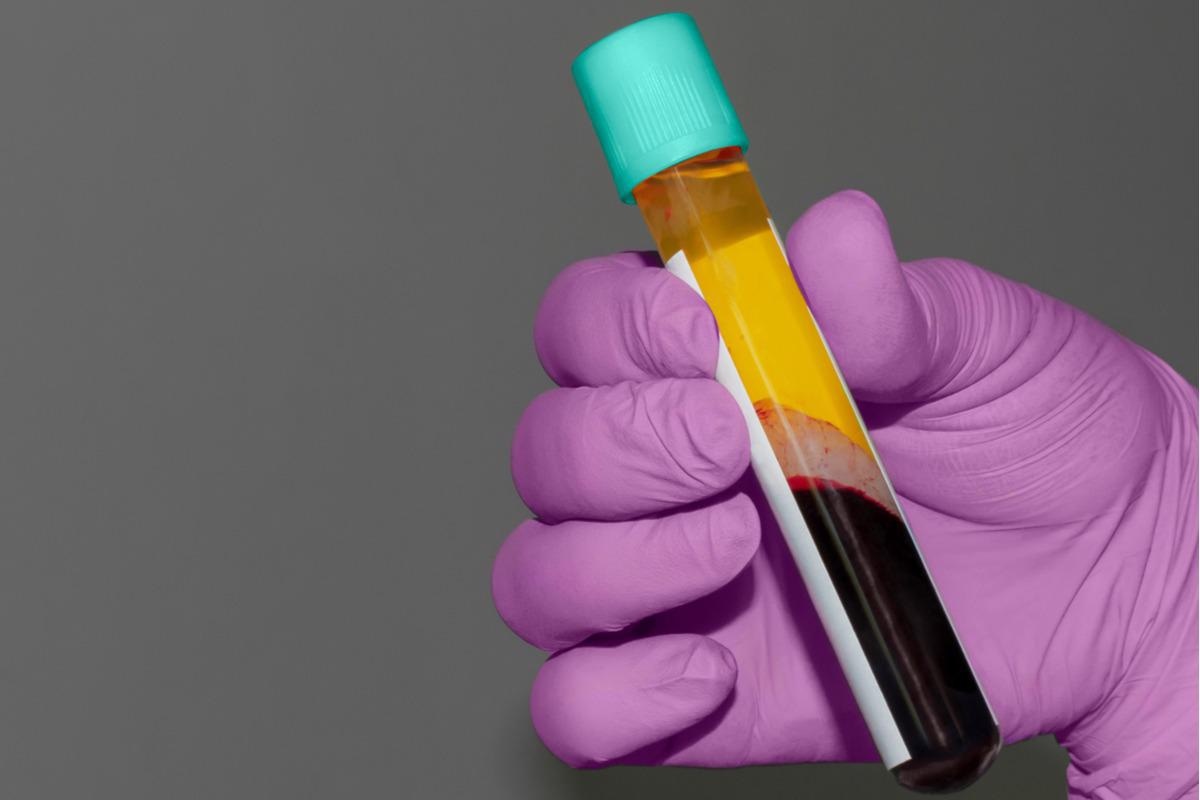The coronavirus disease 2019 (COVID-19) pandemic was overwhelming for hospitals when it first spread around the globe. This was partially because of the rapid transmission rate, and partially because no specific treatments existed for the disease. Healthcare workers were forced to rely on treating the symptoms using oxygen therapy and mechanical ventilation.
 Study: Contribution of endogenous and exogenous antibodies to clearance of SARS-CoV-2 during convalescent plasma therapy. Image Credit: Elkhophoto/Shutterstock
Study: Contribution of endogenous and exogenous antibodies to clearance of SARS-CoV-2 during convalescent plasma therapy. Image Credit: Elkhophoto/Shutterstock
A group of researchers from the University of Zurich have been investigating the possibility of using convalescent plasma to help patients recover.
A preprint version of the group’s study is available on the medRxiv* server, while the article undergoes peer review.
The study
The phase I trial was a non-randomized, open-label test that included comprehensive profiling of donor plasma for severe acute respiratory syndrome coronavirus 2 (SARS-CoV-2) antibodies. The aim was to ascertain the safety of plasma therapy and determine which effect transfused SARS-CoV-2 plasma antibodies had on the virological and disease status. Patients received 200mL of plasma three times on consecutive days, before extensive monitoring over the next 70 days.
A total of 30 infected patients received this treatment. 60% of these required oxygen supplementations and all of them showed signs of COVID-19 pneumonia. 34% of patients showed immunosuppression, from sources such as immunodeficiency, cancer, and organ transplants. 73% had one or more comorbidity. The media age of participants was 63.5 years, and roughly one-third of participants were women, the rest men. Most SARS-CoV-2 lineages were shown to derive from B.1, carrying the D614G mutation. All patients also received supportive care and oxygen therapy, as well as remdesivir and steroids for specific individuals.
Adverse effects were observed in 20% of individuals, all of which were unrelated to the plasma therapy. One patient suffering from chronic lymphocytic leukemia died from hospital acquired pneumonia, though no other patients died. A seven-category ordinal scale was developed for pulmonary function, and function score gradually improved over the course of the study, with 83% of patients reaching full function by the end. Median duration of hospitalization was eight days. Two patients needed intensive care over this time, and required mechanical ventilation.
Overall, the researchers observed rapid improvement in respiratory rate, oxygen saturation and body temperature by day nine. Markers of inflammation progressively improved for the majority of participants, with C-reactive protein showing a particularly dramatic decline following administration of the plasma therapy. Coagulopathy markers, typically associated with severe outcomes following COVID-19 infection was significantly decreased by day four. Virological improvement was measured in viral load in blood and nasopharyngeal swabs, and rapidly decreased over time.
The researchers collected 105 plasma donations from convalescent male donors to ascertain the availability of ABO compatible plasma, which revealed a heterogeneous pattern typically seen in SARS-CoV-2 infection. This could range from high responses from IgG, IgA and IgM reactivity to spike and nucleotide proteins, to low reactivity. This was measured using a sensitive multiplex seroprofiling test ABCORA and confirmed by a commercially available anti-spike assay. Neutralizing titers varied from zero to 2700.
The impact of convalescent plasma antibody on viral clearance and virological improvement were also investigated. High and low neutralizing plasma were classified by a 50% neutralizing titer of 250, and patients were stratified accordingly. The baseline characteristics of these two groups were found to be comparable.
The highly neutralizing plasma was shown by basic Kaplan-Meier analysis to be associated with faster viral clearance. This was verified in a parametric model adjusted for recipient baseline parameters and comorbidities. Censored regression models were used to further quantify the effect of plasma therapy on virus decay, revealing that the half-lives of viral loads in recipients of high neutralizing plasma were significantly shorter.
The researchers monitored the evolution of SARS-CoV-2 antibodies at selected times throughout the trial in order to measure seroconversion rate of the participants. The ABCORA test revealed a variable response from low level results to full seroconversion with high IgG anti-spike levels. Neutralization activity was also disparate, with 12 individuals not reaching 50% neutralization at baseline. By day nine, neutralization and binding antibodies had increased in most participants, and then stalled. The presence of neutralizing antibodies was inversely correlated with detectable SARS-Cov-2 in blood.
Conclusion
The authors highlight that this research demonstrates the potential of convalescent plasma therapy in helping individuals recover from SARS-CoV-2 infection. The treatment shows clear capacity to induce more rapid viral clearance in patients showing severe disease. While previous studies have shown much more heterogeneous results, the information presented could provide key insights to explain these, such as variation in serological tests.
The researchers emphasize the need for standardization of assay systems to prevent these issues from becoming more prevalent. They also encourage further exploration of this therapy, particularly for recipients at a relatively early stage of infection.
*Important notice
medRxiv publishes preliminary scientific reports that are not peer-reviewed and, therefore, should not be regarded as conclusive, guide clinical practice/health-related behavior, or treated as established information.
- Maddalena Marconato, et al. (2021). Contribution of endogenous and exogenous antibodies to clearance of SARS-CoV-2 during convalescent plasma therapy. medRxiv.doi: https://doi.org/10.1101/2021.12.09.21267513 https://www.medrxiv.org/content/10.1101/2021.12.09.21267513v1
Posted in: Medical Science News | Medical Research News | Disease/Infection News
Tags: Antibodies, Antibody, Assay, Blood, Cancer, Chronic, Chronic Lymphocytic Leukemia, Convalescent Plasma, Coronavirus, Coronavirus Disease COVID-19, C-Reactive Protein, Evolution, Healthcare, Hospital, Immunodeficiency, Immunosuppression, Inflammation, Intensive Care, Leukemia, Mutation, Nasopharyngeal, Nucleotide, Oxygen, Oxygen Therapy, Pandemic, Pneumonia, Protein, Remdesivir, Research, Respiratory, SARS, SARS-CoV-2, Severe Acute Respiratory, Severe Acute Respiratory Syndrome, Syndrome, Virus

Written by
Sam Hancock
Sam completed his MSci in Genetics at the University of Nottingham in 2019, fuelled initially by an interest in genetic ageing. As part of his degree, he also investigated the role of rnh genes in originless replication in archaea.
Source: Read Full Article
